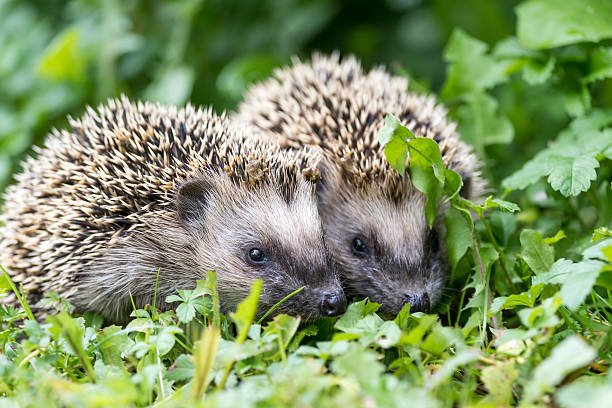10 Adorable Pets with a short live span.
Dealing with the relatively brief lives of pets in comparison to that of people is one of the most challenging aspects of pet ownership. There are several domesticated animals that only live for five years or fewer, including some pets.
Despite the fact that they are only with us for a short period of time, they nonetheless make fantastic pets and may be excellent options for individuals who are unable to commit to maintaining a pet for at least five years.
Lifespan of an Octopus
Octopuses of all shapes and sizes are becoming more and more common fixtures in residential aquariums. Unfortunately, the lifespan of these very clever and intriguing animals is quite brief.
There are some species that only survive for approximately 8 to 10 months, such as the Caribbean dwarf octopus, while there are others that may live for up to 2 years.
It is necessary to maintain highly specialized water conditions and provide an extensive live feed in order to keep an octopus healthy in order for it to live its longest possible life, which makes them a challenging and costly pet to manage.
Rat Lifespan
Ratty owners are often taken aback by their pet rat’s level of intelligence and devotion, since most people would never consider rats to be suitable companions. The fact that rats only survive for roughly one to three years is one of the drawbacks of having them.
They will have a greater chance of living for a longer period of time if you provide them mental and physical stimulation, maintain a clean enclosure, and give them nutritious food. Rats are also social animals, and in order to maintain their health and happiness, it is best to provide them with at least one and preferably more rat buddies.
Lifespan of a Mouse
Detailed view of a house pet mouse
Mice have an average lifespan of one to two years, however some have been documented to have lived as long as four.
Because mice are especially sensitive to ammonia that may build up from urine, keeping their cage clean is the single most effective strategy to ensure that they live as long as they possibly can.
They are extremely sensitive to temperature, which is why the temperature in their cage should be maintained within the range of 65 to 80 degrees Fahrenheit at all times.
They are sociable creatures, much like other rodents, and it is beneficial to their health to live in the company of other mice. However, male mice living with other male mice may grow violent against one another.
Hamster Lifespan
Hamsters have an average lifespan of between 1 and 2 years. The environment in which they live may have a significant impact on their lifetime, just as it does on that of other small rodent pets.
This implies that you are responsible for ensuring that their cage is cleansed of urine and excrement on a regular basis, that they get the best possible diet, which should include fresh meals, and that their behavioral requirements are satisfied.
Hamsters, unlike some other tiny rodents used as pets, such as rats and mice, thrive best when kept alone. When housed with other hamsters, they are more likely to grow anxious and fight with one another.
Gerbil Lifespan
The Mongolian gerbil, which is the most frequent species kept as a pet, has an average lifespan of between two and four years. The fat-tailed gerbil and the Libyan gerbil are two kinds of gerbils that are less often kept as pets, but both have lifespans that range from around 2 to 4 years.
Gerbils have the potential to live their maximum lives if they are given nutritious food, if the atmosphere within their cage is kept clean, and if they are given suitable materials to chew on in order to maintain and strengthen their teeth.
Due to the fact that they are unable to feed normally as a result of this illness, their already short lives might be cut even shorter, which can lead to a state of malnutrition.
Pet Lizard Lifespans
Common pet lizards seldom have a lifespan of fewer than five years, despite the fact that several species of lizards kept as pets may live for 15 years or more. These lizards are all quite modest in size like one another.
Lifespan of the Green Anole
Because of their ability to change color, green anoles are often referred to as chameleons in the United States.
As a pet, they have been known to survive for as long as eight years, but on average, they only live for around four years. It is essential to provide an enclosure for a green anole that has appropriate levels of warmth, lighting, and ventilation if one hopes to see the animal live through its natural lifespan.
It is typical for them to get unwell if the habitat in which they live is very cold and wet, and if they are not receiving the appropriate nourishment, which may lead to metabolic bone disease.
et Rodent Lifespans
Mice, rats, and other rodents make wonderful companion animals, particularly for city dwellers and individuals who are unable to care for a big pet such as a dog due to their size, health, or for other reasons. Unfortunately, the average longevity of a rodent is far lower than that of other types of companion animals.
Guinea Pig Lifespan
These sweet little animals may live anywhere from four to six years. Guinea pigs are sensitive to their surroundings and are more likely to get respiratory ailments as a result. Because of this, it is essential that you maintain their cage clean in order to ensure that they have the longest potential lifespan.
In addition, they have particular nutritional requirements, such as the need for a consistent supply of high-quality hay and vitamin C.
When determining whether you have the necessary room and time to care for a Guinea pig, you should also take into consideration the fact that these animals thrive when they have a friend to play with.
Chameleon Lifespan
Several kinds of chameleons are regularly maintained as pets, and a significant number of these chameleons may survive for five to ten years or even longer. However, there is a species of panther chameleon that only lives for around two to three years, however it is possible for them to live for as long as five years.
The best way to ensure that your panther chameleon lives the longest possible life is to give it with a habitat that is spotlessly clean and that satisfies its unique requirements with regard to temperature, lighting, and humidity.
They must also consume a meal consisting of live insects in addition to taking any necessary nutritional supplements.
Lifespan Estimates for Fish and Other Aquatic Pets
Fish have a relatively limited lifespan, which is sometimes brought on by incorrect water conditions in their tanks or by being housed in tanks that are too large for their needs. However, even when housed in perfect circumstances, there are a few popular kinds of fish that are not meant to be kept as pets since they do not live very long.
The average lifespan of a mosquitofish is between 12 and 18 months, but the average lifespan of betta fish, tetras, guppies, gouramis, mollies, and platys is between 3 and 5 years.
The best way to ensure that your fish live as long as possible is to keep their tank clean by performing regular water changes, to keep the temperature at a level that is appropriate for their species, and to ensure that the size of the tank is appropriate for the number and size of the fish that are being kept.
Hedgehog Lifespan
Hedgehogs are another example of a kind of little pet that has a short average lifetime. They have an average lifespan of around 4 to 6 years, however they have been known to survive for as long as 10 years in certain cases.
Your best bet for ensuring that your hedgehog has a long and healthy life is to provide it with an enclosure that is well suited to its species, complete with hiding places, enough lighting, and a suitable temperature range.
They are solitary creatures who perform better when left alone, thus keeping them in their cage by themselves will prevent them from being upset. However, they do need time out of their cage to investigate their environment.
Why Do Some Pets Have Such a Shorter Lifespan Than Others?
Though this is not always the case, in general, smaller pets have a shorter lifespan than their bigger counterparts. However, this is not always the case across all species.
It’s possible that the evolutionary nature of tiny pets like mice, smaller lizards, and fish is to blame for their shorter lifespans. Scientists think that the bodies of these animals developed in such a manner that a longer lifespan was not a vital component in their evolution since it was superfluous.
This is due to the fact that these creatures do not tend to live for a very long period in the wild.
Mice and rats, for instance, tend to have shorter lifespans in the wild, most likely as a result of being consumed by cats and other forms of predation.
As a result, there was no selective pressure for them to evolve cells and biological capacities that were more robust and better able to withstand the effects of environmental and physical stress.
According to another school of thought among researchers, animals that have a higher metabolic rate often have a shorter lifetime.
Despite the fact that they have a somewhat limited lifespan, they may still make fantastic pets, and if you provide them care that is tailored to their species, you can help them enjoy every moment of their lives to the fullest.
How Well Do Hedgehogs Make Pets? Facts, Prices, And Care
Care Instructions For Hedgehogs As Pets
Pros, Cons, And Care Advice For Owning A Flying Squirrel
Cranberries. Are They Safe For Dogs To Eat?
Can Dogs Consume Grapes Without Any Harm?
Is Cantaloupe Safe For Dogs To Eat?




